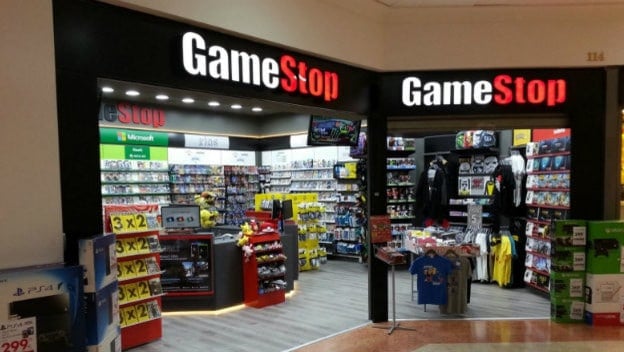GameStop has been struggling a lot lately. With a combination of factors, such as an overall decline of specialty retail chains, digital game sales growth, and used game sales down as a result, GameStop’s numbers have been dropping consistently. We’ve already seen the impact, such as frequent leadership changes, layoffs at subsidiary ThinkGeek, and the erosion of GameStop’s loyalty program discounts. Recently, GameStop announced it’s working with a consultancy firm to test drive some new store concepts, many based around in-store experiences beyond buying games. One idea being floated around is a GameStop location that only deals in retro games and hardware. While some of the other ideas such as in-store kiosks for playing games and esports/tournament spaces seem intriguing, I don’t think a retro-only store would work.
There are a few realities when it comes to the trade and sale of retro games that will not benefit shareholder-oriented public corporation chains. Hell, these things even make selling retro games difficult for locally-owned businesses, which often rely on other products and services on top of the retro wares. Some of these problems have to do with stock, demand/pricing, and longevity. If GameStop isn’t able to do something different somehow with its retro gaming store, then it likely won’t be able to make it past the test market.
It’s nearly impossible to run a brick and mortar business on retro games alone, and I submit as evidence nearly every store I’ve seen that sells retro games. There is always more. Some stores also dabble in things like collectibles, tabletop gaming, technology repair, other electronics, modern games, so on and so forth. A big part of that is availability. Retro games are inherently limited in supply, as none of these games are produced anymore. Store stock is entirely based on acquisitions, through things like storage auctions, local deals, and of course trade-ins. But due to the popularity of retro game collection, there are a ton of people running their own storefronts (online or otherwise), or maintaining their collections such that everyone interested already knows the value of their stuff.
You can already see what a GameStop selling retro games looks like by visiting the GameStop website. Some stores also sell retro games, although I haven’t seen any personally. On GameStop’s website, you can generally expect games to float around their “retail” prices. What that means in the retro space is the price you’d see for games on things like eBay stores and other brick and mortars. Everyone generally knows what a game is worth, and going too low when demand is still pretty strong won’t do anyone any favors, especially for a struggling business.
Even retro-oriented businesses or stores with a retro theme (such as Play and Trade) have other things going on in their stores beyond the retro stuff. Walk into a shop like that and you’ll see current games, creations from local artists, and more. GameStop already sort of does that in its normal stores, with merchandise such as apparel, collectible figures, and other things like Pokemon and Magic the Gathering trading cards. So either these retro-only stores will be small, agile operations, or they’ll be filled with all the same stuff GameStops already struggle to sell, unless there’s some sort of secret plan to stand out among all the other retro specialists.

There’s also the matter of longevity. Days are numbered for retro games, especially ones that sit in shops and come from places like flea markets or abandoned storage units, attics, basements, so on and so forth. Cartridge rot is a thing, and it’s coming for all your favorite Atari games. Eventually the Nintendo stuff won’t function, and the disk-based games will eventually go as well. That’s why there’s so much effort in the game preservation space now, and why obscure and unreleased games are being dumped as ROMs and things like retro flash carts are becoming popular. Retro gaming on original hardware has a shelf life.
Obviously this is all just me shooting from the hip based on a recent, vague press release from GameStop. There’s no telling what these test stores will look like, how many of them there will be, or what scale they’ll be operating at. This could be a single location for all I know, and perhaps one idea on a list of many that isn’t expected to work. But based on what I’ve seen happening in the retro store market already, I doubt a retro-only store at the GameStop scale is going to move any needles. There are plenty of reasons to root for GameStop, but I’m scratching my head over this one.
